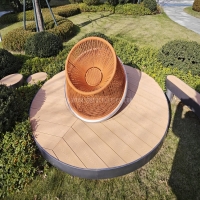Welcome to the website for landscape facilities products and knowledge.
What are the potential challenges or barriers to adoption of the Landscape Round Table in traditional office settings?
The integration of Landscape Round Tables into traditional office settings presents several formidable challenges that organizations must thoughtfully address. One primary barrier lies in spatial compatibility, as these circular collaborative stations often demand more open floor plans than conventional cubicle-based layouts can readily accommodate. Many established offices face significant physical infrastructure constraints, with fixed walls, existing electrical systems, and traditional desk arrangements creating substantial redesign requirements.
Cultural resistance represents another critical obstacle, as employees accustomed to hierarchical seating arrangements and personal workspace territories may perceive the forced collaboration of round tables as intrusive or disruptive to established work patterns. The transition from individual-focused work environments to collective spaces often triggers concerns about privacy, noise distraction, and loss of personal storage areas. Furthermore, the perceived informality of circular seating configurations can clash with corporate cultures that emphasize clear departmental boundaries and formal meeting protocols.
Financial considerations create additional adoption barriers, as the procurement costs for specialized round tables frequently exceed those of traditional rectangular alternatives. Organizations must also factor in the substantial expenses associated with office reconfiguration, employee training programs, and potential temporary productivity dips during the transition period. The return on investment becomes particularly difficult to quantify when balanced against intangible benefits like enhanced collaboration and innovation.
Ergonomic and technological integration issues further complicate implementation. Landscape Round Tables must accommodate varied employee heights, mobility requirements, and accessibility needs while simultaneously integrating power sources, data ports, and display systems without creating cable management chaos. The one-size-fits-all approach of many circular designs often fails to address the diverse physical needs of a multigenerational workforce, potentially creating new workplace discomfort issues even as it attempts to solve collaboration challenges.
Change management resistance underscores all these barriers, as employees and management alike may question the necessity of disrupting established workflows for unproven benefits. Without clear communication, comprehensive training, and demonstrable leadership support, even the most thoughtfully designed round table implementation risks being perceived as another passing management trend rather than a genuine improvement to the work environment.
Related search:

Recommendation
Swivel chair-Specialty steel structure woven rattan leisure chair with rotatable design